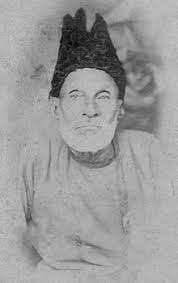Kankalitala Temple, Bolpur
- Located in Bolpur Sriniketan, about 30 minutes’ drive from Prantik station is the Shakti Peethas where the waist (kankal meaning bone in Bengali) of sati fell as per the mythology of Daksha yaga.
- According to Tantrachuramati, it is the 28th satipeeth.
- In ancient times this place was famous as Kanchi. The Kanchishwar Temple is also within the Kankalitala Temple complex.
- Goddess Parvati, the Goddess of Shakti is the residing deity of this temple.
- People also come here to attend the fair held every year on the last day of Bengali month Chaitra. The major festivals celebrated here are Navratri and Shivratri.
- The temple is located at the banks of Kopai river.
- As per another mythological narrative, the monstrous Kala Pahar is also well-known in the area of the Kankalitala temple. The tenacious Kala Pahar, a Muslim general, shattered the upward base of the swayambhu shiva lingam at this temple in the 16th century, when Bengal was governed by the Afghan Pathan warrior Sulaiman Khan Karrani, who was the Mogul Ruler Akbar at the time. The Hindu temples from the past should be destroyed, according to this Kala Pahar.
- The building has a simple architecture with a pyramidal design. The Garbhagriha, which in Sanskrit means "womb chamber," is a small area of the main temple in Kankalitala that is covered by a curved pyramidal roof and embellished with a metal spire. A raised platform in the form of a rectangle, known as the nat mandir, is attached to this.
- Even though Goddess Kali appears in the form of a painting, she is revered as Goddess Parvathi.The Shakti of the temple is addressed as Devgarbha and the Bhairava as "Ruru". The latter is dedicated as a Shiva Lingam in the Shiva Temple near the complex's entrance. The marble floors are paved. The Shiva lingam is buried. It is believed that the lingam was formerly enormous, but it was destroyed during the infamous Kala Pahar's invasion of Islam in the 16th century. The Kankalitala Temple's terracotta decorations are present at the entryway.
- The place where bones of Devi Sati fell is known as the temple Kund. Besides the temple, the complex is a calm pond. The Kund (Sanskrit for "holy tank/pond") is a tiny, shallow pond that is enclosed by a red fencing. Stairs descend to the sacred water of the Kund. It is said that the Kund has a direct connection to the Manikarnika Ghat in Kashi.
References
https://utsavapp.in/blogs/maa-kankalitala-temple-history-significance-architecture
 |
| Stalls near the entrance |
 |
| The Deity |
 |
| The Kund |
 |
| Plaque installed upon renovation |















Comments
Post a Comment